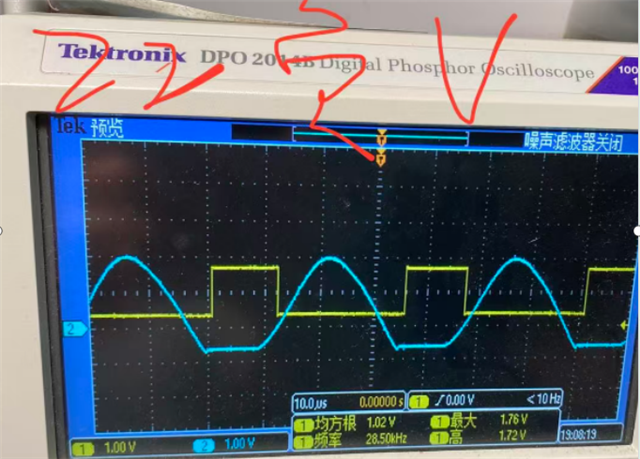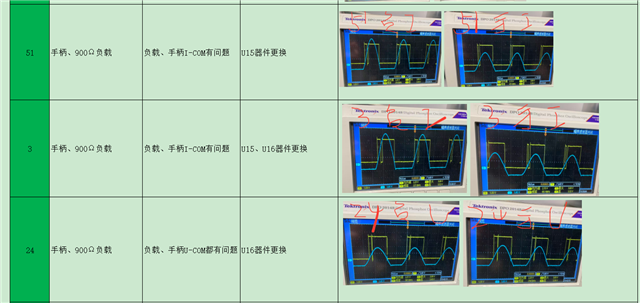Other Parts Discussed in Thread: TLV3511, TLV1872
Tool/software:
Test conditions: The input signal is a 28Khz sine wave, and the output is a square wave,Another adverse phenomenon is that the phase and signal amplitude are both normal, but the signal will suddenly be pulled low and then return to high level when it is high.
Adverse phenomenon: The output level amplitude is significantly low and the phase is offset.
Defective rate: 12.5%, 16/128PCS
Replacing with new materials is likely to solve the problem, but there is still a probability of the same issue occurring.
Could experts please take a look at the reasons behind this?






